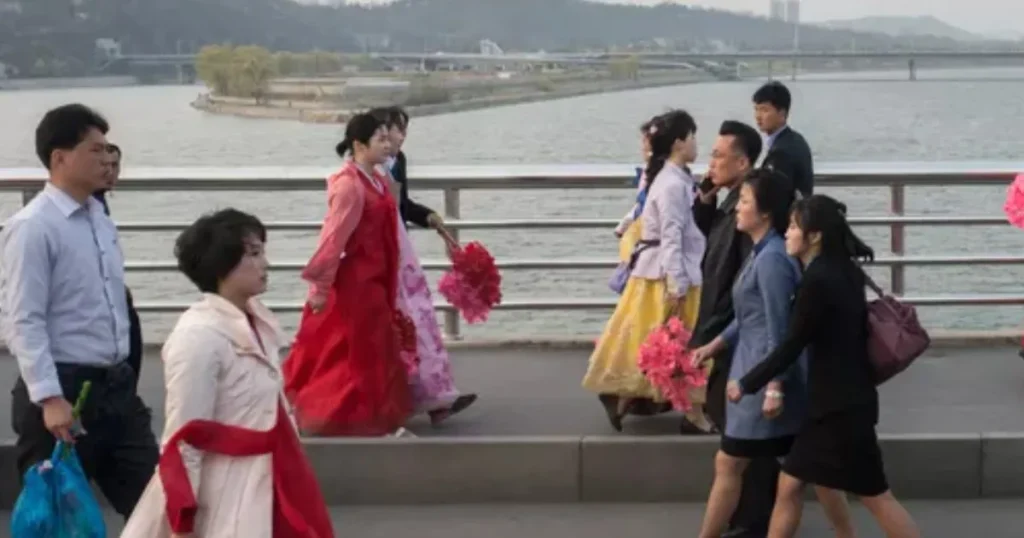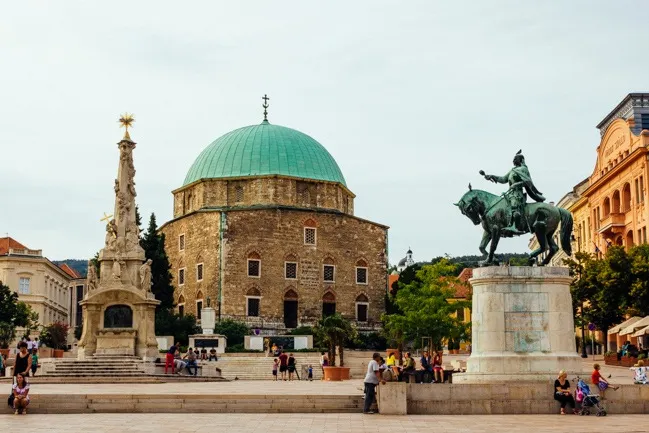
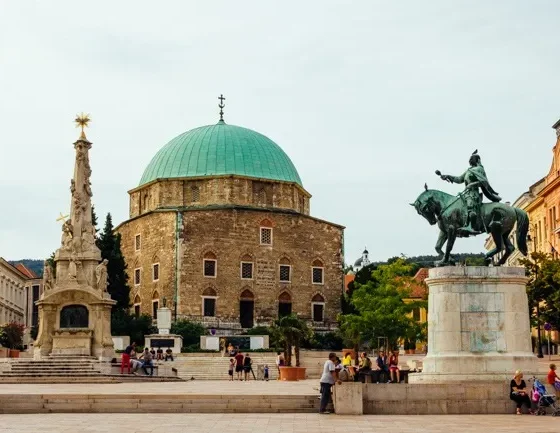
Pecs. City of history, culture and tradition
200 km by expressway to the Southwest of the Hungarian capital of Budapest, lies the city of Pécs (pronounced « PETCH »), capital of Baranya province, the fith largest in the country with 170000 inhabitants.
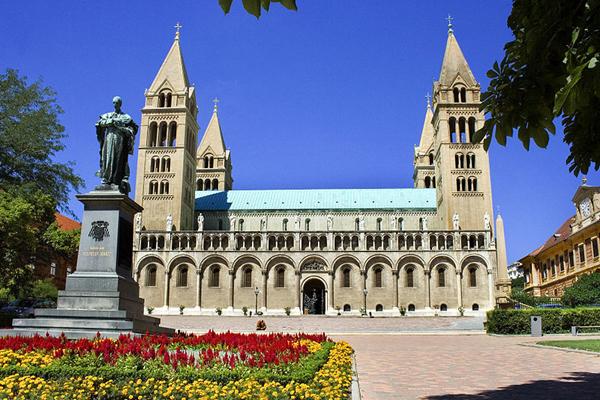
200 km by expressway to the Southwest of the Hungarian capital of Budapest, lies the city of Pécs (pronounced « PETCH »), capital of Baranya province, the fith largest in the country with 170000 inhabitants.
Relatively unknown to foreign tourists, it became famous when it was selected as European Capital of Culture in 2010.
Brief History
It was first settled in 4000 BC and invaded by the Romans under the reign of Emperor Augustus (27 BC-14 AD). It was part of the Hungarian Pannonia Province under the name of Sopianae.
At the end of the 2nd century AD, Diocletian divided Pannonia into four entities and Sopianae became the capital of Pannonia Valeria (name of Diocletian’s daughter).
In 313, Constantine the Great put an end to the persecution of Christians and the local Christian community built the old necropolis listed by Unesco on the World Heritage list in 2000.
Between the 5th and 9th centuries, numerous Magyar tribes conquered the area.
In 1009, St Stephen, the first Hungarian King, founded the Episcopal Diocese of Pécs, and Peter, his successor, starting building a cathedral.
In 1367, the first university in Hungary was created by Louis the Great. Pécs then became a centre of Renaissance humanism in the 15th and 16th centuries.
After the Turkish invasion in 1543, Pécs became the westernmost outpost of the Ottoman Empire until the reconquest in 1686. Numerous German settlers then flocked to the city in the following 100 years.
In 1780, Pécs became a Free Imperial City under Maria-Theresa of Austria.
During the Industrial Revolution of the 19th century, the city saw its prosperity soar and in 1853 came the creation of the famous Zsolnay Porcelain Manufacture which became in the 20th century the largest of its kind in the whole Austrio-Hungarian Empire.
After 1970 began an industrial decline from which the city is still in the process of recovering.
The listing as European Capital of Culture in 2010 has helped to put the city on the tourist map and it is hoped that the flow of visitors, local and foreign, will contribute to the rebirth of Pécs.
Discovery Tour
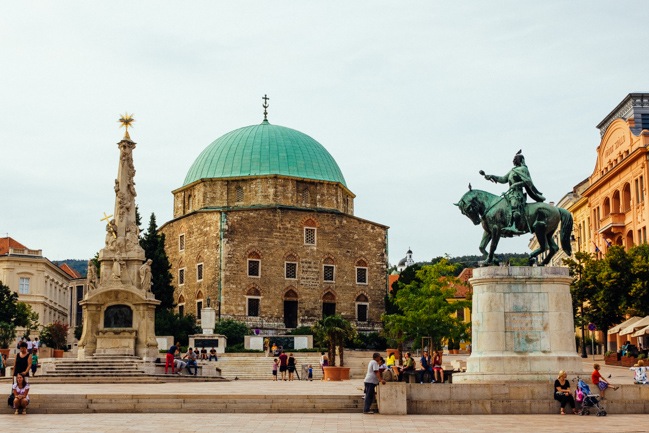 The visit should ideally start on the Main Square, Széchenyi Tér (see picture), where key buildings and structures are located.
The visit should ideally start on the Main Square, Széchenyi Tér (see picture), where key buildings and structures are located.
The Mosque of Pasha Gazi Kassim, largest in Central Europe, was built in 1543-46 on the site of the former St Bartholomew’s Gothic Church (13th century). It was turned again into a Catholic Church by the Jesuits after the departure of the Turks. Nowadays, it is called the Inner City Church, a mix of catholic and muslim tradition. The Dome is topped by both a cross and a crescent moon.
On the square, there is also the Holy Trinity Column and the equestrian statue of Janos Hunyadi, general and Governor of Hungary, father of Matthias Corvinus the country’s greatest king.
Other attractive buildings not to be missed are the Provincial Headquarters and City Hall.
Going down to the lower part of the square, do not miss the Zsolnay Fountain and St Sebastian’s church. As you proceed, you will come to Kossuth Square and the Synagogue built in the 1860s with its oak-panelled interior. At the time, 4000 jews resided in the city.
Climbing back to the Main Square from the opposite direction, you will see the grand Main Post Office building and further up the street the remains of old Turkish Baths, the Mosque of Jakovali Hassan (16th century) and the Franciscan Church.
Head now for the four-tower Cathedral (see picture) on the location of the original church built in 1040 and now a neo-Romanesque reconstruction built by the Austrian architect Friedrich von Schmidt in 1883-91.
On Cathedral square you will see the Bishop’s Palace (where Frans Liszt stayed during his visit in 1846) and the Archive Building.
And now the the vast hall of Septichora and the remains of the Christian necropolis and its burial chambers with wall paintings. The complex was listed by Unesco in 2000.
Back to the main square, head for Kiraly (bishop 1807-25) street (also called « Promenade »), lined with sidewalk cafés and glorious buildings : the stunning Art Nouveau Palatinus Hotel, the National Theater completed in 1895, the Lyceum Church and the nicest house in town called Vasvary.
If you have time left, go to the museum area to visit the Archeological Museum, the Klimo Library, the Zsolnay Museum (oldest building from 1324), the Vasarely Museum, the Mining Museum and the Csontvary Museum.
You will then have visited the highlights of this charming city, but there are many other exciting sights that you will discover strolling through the streets of Pécs.
Jacques Campé
Достопримечательности Россия
Лучшие тематические парки развлечений в Европе
В Европе расположены одни из ведущих в мире парков развлечений с захватывающими дух аттракционами.
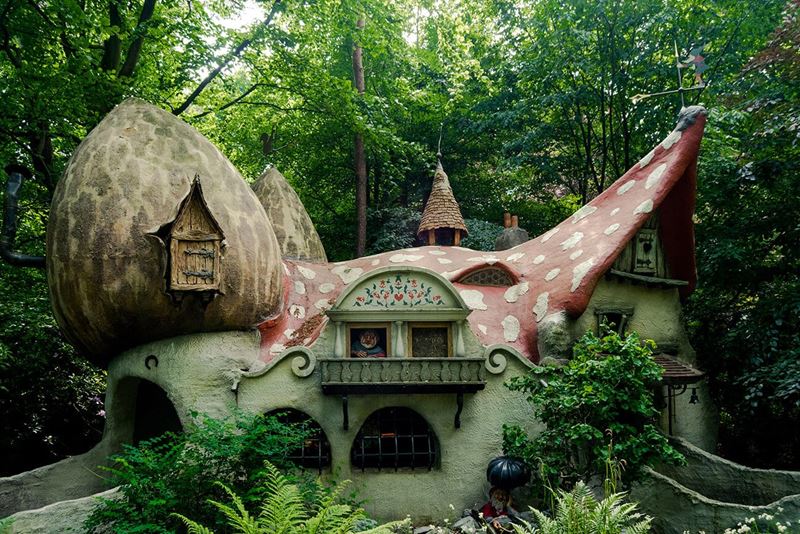
Мы расскажем вам о парках, которые в последние годы демонстрируют наибольший рост посещаемости, а также выясним, почему некоторые из ведущих парков продолжают оставаться столь успешными.
1. Диснейленд-парк, Диснейленд Париж, Франция — посещаемость 9 930 000 человек
Парк Диснейленд является флагманским объектом курорта Disneyland Paris, и его проверенные временем аттракционы привлекают большое количество гостей. К ним относятся «Мир тесен», «Гора Большого Грома», «Пираты Карибского моря» и «»вездные войны», «Гиперкосмическая гора».
В 2021 году в парижском Диснейленде была введена новая программа обеспечения доступности, предоставляющая персональную автономию посетителям с ограниченными возможностями и особыми потребностями.
«Наша новая программа доступности — это важный шаг вперед в нашем стремлении обеспечить доступность Disneyland Paris, позволяющий каждому гостю ощутить магию парка Disneyland и Walt Disney Studios Park», — сказал Даниэль Делькур, старший вице-президент Disneyland Paris.
В 2022 году парижский Диснейленд отметил свое 30-летие.
В 2023 году парк объявил о ряде мероприятий и обновлений, посвященных компании Pixar. Среди них — новая комната по мотивам фильма Disney и Pixar «Лука» (2021 г.) в ресторане Pizzeria Bella Notte и преобразование ресторана Fuente Del Oro в мексиканской тематике во Frontierland в Casa de Coco — Restaurante de Familia по мотивам фильма Disney и Pixar «Коко» (2017 г.).
2. Европа-парк, Германия — посещаемость 5 400 000 человек
Самым загруженным тематическим парком Европы, не принадлежащим компании Disney, является Europa-Park в Германии. В 2019 году семья Мак, владеющая парком, приступила к осуществлению самой крупной инвестиции — строительству долгожданного аквапарка Rulantica.
Построенный на сумму около 180 млн. евро, этот преимущественно крытый объект выполнен в привлекательной скандинавской тематике. Некоторые из его горок и аттракционов являются первыми в своем роде в Германии. Объект площадью 32 600 кв. м непосредственно связан с шестым тематическим отелем курорта Europa-Park — Krønasår. В 2021 году к «Рулантике» добавился еще один отель — «Свальгурок».
В целом именно внимание к деталям делает Europa-Park таким привлекательным местом для посещения. Аттракционы и развлечения распределены по тематическим зонам, представляющим 18 европейских стран. В 2020 году в парке была открыта многомиллионная реконструкция аттракциона «Пираты Батавии».
Недавно в парке появилась новая концепция развлечений — Eatrenaline.
3. Эфтелинг, Нидерланды — посещаемость 5 430 000 человек
Следующим в списке лучших тематических парков Европы является Эфтелинг. В 2019 году посещаемость тематического парка №1 в Нидерландах составила 5,4 млн. человек. Однако за последние 10 лет этот сказочный парк, расположенный неподалеку от Тилбурга, продемонстрировал исключительные результаты: в начале десятилетия его посещаемость выросла с 4 млн. человек в год.
Эфтелинг также ввел 365-дневный календарь работы и вторую деревню отдыха, Loonsche Land. Все это способствовало росту числа посетителей и формированию международного профиля.
Поклонники темных аттракционов высоко оценили аттракцион Symbolica, который был открыт в 2017 году. Кроме того, большие надежды возлагаются на предстоящий перезапуск классического аттракциона Droomvlucht («Полет мечты»). В то же время подводная горка Baron 1898 компании B&M заслуживает внимания не только благодаря великолепному тематическому оформлению, но и благодаря захватывающим ощущениям.
ДостопримечательностиКультура, ТрадицииМаршрутыОбзорыСтатьи по странам Россия
Кострома музейная. Путешествие в мир цыганской культуры и быта
Колорит и таинственность, пестрые юбки, браслеты, звенящие бусы и черные локоны, лошади, романс, гитара, кочевая кибитка…. Все это можно сказать про цыган — отдельную цивилизацию, существующую много веков параллельно нашей…
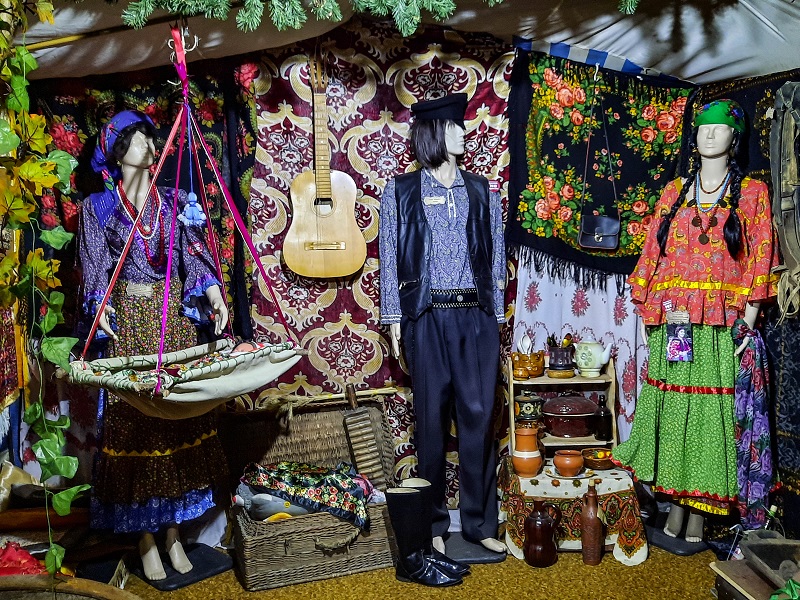
Почему они не смешались с народами, среди которых жили? Что мы о них знаем? То, что они с рождения прекрасно поют и танцуют, больше жизни любят лошадей, что они находчивы, хитры, вороваты, живут табором. Не много, практически ничего!
На сегодня это единственный кочевой народ, у которого нет своей страны, но, не смотря на это, у этого народа есть столица, хоть и не официальная (г.Сороки в Молдавии), есть свой гимн и свой флаг. И это, наверное, единственный народ, сохранивший при своей разрозненности язык, культуру и традиции, а еще почти не меняющиеся многие годы детали одежды, украшения и свои эталоны красоты.

С удивлением узнала, что этот народ – выходец из Индии. Яркие цвета, бусы из монет, множество украшений – все это отголоски народной праздничной одежды индусов. В наше время, цыган можно встретить во всех городах, странах и на всех континентах, говорят они на разных языках, впитывая диалекты и обогащая свой язык и традиции опытом тех народов, на территории которых они проживают.
Душу цыган сложно постичь без глубокого погружения в истоки зарождения этого народа, не послушав их песен и не увидев их танцев. Лирика цыганского народа стала знакомой всему миру через их проникновенные голоса, их веселье и задор. Ну а танцы — шумные, яркие, раскованные, с летящими подолами пышных юбок и звоном монет на груди у танцовщиц, стали символом радости и свободы изначально на ярмарках и праздниках, а сейчас на конкурсах среди профессиональных хореографических коллективов.
Кстати, подарком от цыган для нас является романс. Мне кажется, нет человека на земле, душу которого не трогает удивительно глубокая мудрость текста и задушевная музыка романса.

Сегодня прикоснуться к традициям этого загадочного народа можно приехав в Кострому. Именно в этом русском городе создан единственный Музей цыганской культуры и быта.
Коридоры музея, его комнаты заполнены предметами, одеждой, фотографиями, картинами, которые отражают тысячелетнюю историю народа, представители которого, рассыпались по миру как бусины одного ожерелья.
Хранитель музея, Андреев Сергей Борисович, эмоционально расскажет о том, чего мы не знаем — взаимоотношения цыган с коренными народами разных стран, традиционные занятия цыган, влияние европейской моды на цыганский костюм, их вклад в музыкальную культуру и кинематограф Европы и, конечно, России.

От входа — небольшой коридор истории СССР. Все экспонаты коридора – старые фотографии и документы, показывающие, как цыганам жилось в Стране Советов. А еще – история. Геноцид цыган во время многочисленных войн и особенно II Мировой. Солдаты Великой Отечественной. Хоть и нет у цыган своей страны – они шли воевать за СССР, становились Героями.

Отдельная экспозиция посвящёна театру «Ромэн», в котором о Костромском музее, хорошо знают. Здесь собраны костюмы, афиши, билеты, программки, фотографии. Среди экспонатов есть театральный костюм, лично подаренный Сергею Борисовичу народным артистом СССР, руководителем театра Николаем Сличенко. Из последних поступлений — наряд цыганки принадлежащей к касте котляров. Традиционное занятие этой касты не гадание и не лошади. Это ремесленники — кузнецы и лудильщики посуды.
Дальше – типичная цыганская комната, где всё, как положено — золотые чайные чашки, комоды, шкафы и неизменное пианино.

А еще в музее есть уголок с книгами, на полках собраны самоучители, словари и азбуки. И в финале сюрприз для посетителей – уголок цыганского театра кукол, представления которого увлекают не только детей, но и взрослых.

Основатель музея медленно, шаг за шагом погружает посетителей в тот мир, которого мы совсем не знаем. В мир, который он бережно хранит. Мир, который заслуживает внимания и который просто необходимо сохранить для будущих поколений. Ведь это наша история и она заслуживает бережной памяти.
Адрес музея: Кострома, ул. Козуева д. 3/46
Телефон: 8 (4942) 50 17 34
ДостопримечательностиОбзорыСтатьи по странамТранспорт Россия
Маршруты путешествий по стране в формате «поезд-отель»
Любите путешествовать на поезде? РЖД предлагает туристам разные маршруты путешествий по стране в формате «поезд-отель».

Пассажиры туристических поездов могут спланировать свою экскурсионную программу самостоятельно или в пути у проводника оформить отдельные экскурсии. Мы собрали лучшие маршруты в одной подборке. Сохраните себе и не забудьте поделиться с друзьями.
«Сочи»
Поезд № 927/928
Туапсе – Сочи – Гагра (Абхазия)
Тур в Абхазию можно совершить на 1 день или 2 дня/1 ночь. Автобусные экскурсии по Абхазии можно приобрести во время поездки у проводника.
Все вагоны поезда оформлены в ретро стиле времен СССР.
«Серебряный маршрут»
Поезд № 924/923
Москва – Псков – Великий Новгород – Рыбинск – Ярославль – Москва
Красоты древних русских городов вы увидите всего за одни выходные.
«Жемчужина Кавказа»
Москва – Майкоп – Нальчик – Грозный – Махачкала – Дербент – Кисловодск – Москва
За 7 дней поездки можно увидеть побережье Каспийского моря, горные пейзажи, знаменитое озеро Казеной, мечеть «Сердце Чечни», Сулакский Каньон, Эльбрус, древний Дербент и другие красоты.
«В Карелию»
Поезд № 928/927
Москва – Петрозаводск – Сортавала – Выборг – Москва
На участке пути от станции Хелюля до Сортавала туристический поезд будет следовать на паровозной тяге.
«В Сибирь»
Поезд 926/927
Москва – Казань – Тюмень – Тобольск – Пермь – Москва
5 ночей/6 дней. Доступны вагоны классов «Люкс» и «купе». Туристы смогут посетить музей-заповедник «Казанский Кремль», термальный СПА-курорт в Тюмени, туристский комплекс «Абалак» в Тобольске и другие интересные объекты.
«Цветущая степь»
Москва – Ростов-на-Дону – Элиста – Москва
За 4 дня тура путешественники смогут увидеть не только интересные города с самобытной культурой, но и станут свидетелями уникального явления – цветения калмыцкой степи.
При написании использовались материалы публикации https://t.me/trip2rus2/81

 Статьи по странам2 месяца назад
Статьи по странам2 месяца назадОсень на Камчатке: советы для поездки в сентябре

 Полезные советы2 месяца назад
Полезные советы2 месяца назадСтюардесса дала полезные советы по безопасности в путешествиях
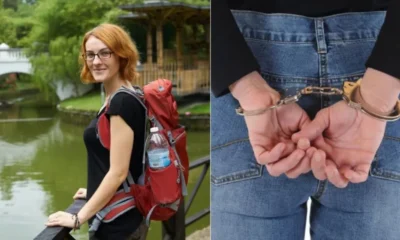
 Обзоры2 месяца назад
Обзоры2 месяца назадСколько лет тюрьмы могут теперь получить туристы на Бали за просроченные визы

 Обзоры2 месяца назад
Обзоры2 месяца назадМарии Кожевниковой жестко ответили по поводу её возмущения аэропортом в Сочи
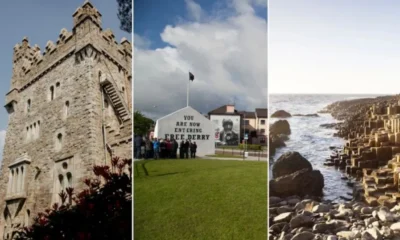
 Маршруты2 месяца назад
Маршруты2 месяца назад5 маршрутов, показывающих все лучшее в Ирландии

 Маршруты2 месяца назад
Маршруты2 месяца назадОсень в Воронежской области: незабываемое автопутешествие для всей семьи












